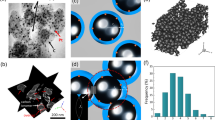Conclusions
The proposed computational approaches for determining the thermal conditions of the fuel elements with allowance for their operating history have made it possible to bring closer together the calculated and experimental values of the power effect of reactivity and its dependence on the power level in the BN-350.
Analysis of the causes of the divergence of the experimental and calculated values of the power effect of reactivity showed that these divergences, as well as changes in the effect during operation, are due mainly to the thermal conditions of the fuel elements. The principal indeterminacy in the calculation of the thermal conditions of the fuel elements is due to the contact thermal conductivity and its variation with the operating conditions of the fuel elements in the reactor. In order to eliminate this indeterminacy it is necessary to carry out experimental investigations to ascertain the contact thermal conductivity as well as to refine the physicomechanical properties of the fuel (thermal conductivity, ultimate strength etc.) as a function of the burn-up and temperature.
Similar content being viewed by others
Literature Cited
V. V. Orlov et al., Kernenergie,4, 112 (1969).
G. Khammel and D. Okrent, Reactivity Coefficients in Large Fast-Neutron Power Reactors [in Russian], Atomizdat, Moscow (1975).
B. Lastman, Radiation Effects in Uranium Oxide [in Russian], Atomizdat, Moscow (1964).
I. G. Lebedev et al., Preprint NIIAR P-3 (297), Dimitrovgrad (1977).
J. Robertson et al., J. Nucl. Mater.,7, 225 (1962).
M. Lyons et al., Nucl. Eng. Design,21, 167 (1972).
O. D. Kazachkovskii et al., in: Proc. Symp. of COMECON Member-Nations “State of the Art and Prospects of Work on Creation of Atomic Power Plants with Fast-Neutron Reactors,” Izd. ONTI FÉI, Obninsk, Vol. 2 (1969), p. 95.
W. Baily, et al., Trans. Am. Nucl. Soc.,9, 42 (1966).
B. A. Boley and J. H. Weiner, Theory of Thermal Stresses, Wiley (1960).
A. M. Kats, Theory of Elasticity [in Russian], Gosteorizdat, Moscow (1956).
R. B. Kotel'nikov et al., High-Temperature Nuclear Fuel [in Russian], Atomizdat, Moscow (1969).
H. Ubisch et al., in: Proc. Second United Nations Int. Conf. on the Peaceful Uses of Atomic Energy, Geneva (1958), Vol. 7, p. 697.
M. Freshley, Nucl. Eng. Design,21, 264 (1972).
Yu. I. Likhachev and V. Ya. Pupko, Strength of Fuel Elements of Nuclear Reactors [in Russian], Atomizdat, Moscow (1975).
V. S. Yamnikov et al., At. Tekh. Rubezhom, No. 2, 21 (1969).
V. V. Orlov et al., At. Energ.,42, No. 1, 3 (1977).
G. M. Pshakin, in: Nuclear Constants [in Russian], Vol. 21, Atomizdat, Moscow (1976), p. 208.
D. S. Yurchenko et al., in: Proc. IAEA Symp. on Design, Construction, and Operating Experience of Demonstration LMFBRL, Bologna, April 10–14 (1978), IAEA-SM-225/60.
L. A. Alekhin et al., in: Proc. IAEA Symp. of Design, Construction, and Operating Experience of Demonstration LMFBRL, Bologna, April 10–14 (1978), IAEA-SM-225/60.
Additional information
Translated from Atomnaya Énergiya, Vol. 47, No. 3, pp. 157–161, September, 1979.
Rights and permissions
About this article
Cite this article
Pshakin, G.M., Proshkin, A.A. Power effect of reactivity in fast power reactor with allowance for behavior of fuel under irradiation. At Energy 47, 703–707 (1979). https://doi.org/10.1007/BF01120091
Received:
Revised:
Issue Date:
DOI: https://doi.org/10.1007/BF01120091




